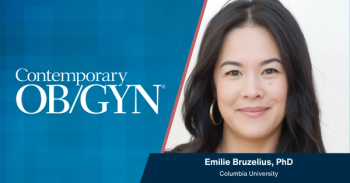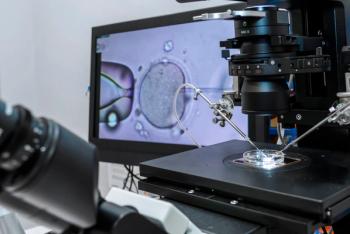
A cost efficient approach to the diagnosis and treatment of infertility for the OBGYN generalist
The purpose of this proposal is to outline suggested clinical pathways for the management of infertility and common reproductive endocrinology problems. The goal is to create an approach that provides the greatest success while using limited resources in the most cost-effective fashion.
This article also available
Introduction
The purpose of this proposal is to outline suggested clinical pathways for the management of infertility and common reproductive endocrinology problems. The goal is to create an approach that provides the greatest success while using limited resources in the most cost-effective fashion.
A traditional approach to the management of Reproductive Endocrinology & Infertility problems can be found in any traditional text. However, most texts do not take into account the limited availability of resources within a managed care environment, and do not address the issue of stratification of care into that provided by an OB/GYN generalist and that provided by the reproductive endocrinology subspecialist. To that end, this outline will attempt to focus on what care is best provided by which practitioner.
To design a cost-effective, medically appropriate evaluation and treatment plan, we must take the patient's age into consideration. While there is little necessity to initiate aggressive therapy for the 20 year old with unexplained infertility, those over 35 deserve a more aggressive approach.
The purpose of this proposal is to outline suggested clinical pathways for the management of infertility and common reproductive endocrinology problems. The goal is to create an approach that provides the greatest success while using limited resources in the most cost-effective fashion.
A traditional approach to the management of Reproductive Endocrinology & Infertility problems can be found in any traditional text. However, most texts do not take into account the limited availability of resources within a managed care environment, and do not address the issue of stratification of care into that provided by an OB/GYN generalist and that provided by the reproductive endocrinology subspecialist. To that end, this outline will attempt to focus on what care is best provided by which practitioner.
To design a cost-effective, medically appropriate evaluation and treatment plan, we must take the patient's age into consideration. While there is little necessity to initiate aggressive therapy for the 20 year old with unexplained infertility, those over 35 deserve a more aggressive approach.
Initial Infertility Evaluation
*Complete history and physical examination. Obtain all previous medical records for treatment related to infertility, hormonal or menstrual disturbances, anovulation, gynecologic surgery, or pelvic infection. Appropriate medical information should be gathered on the husband. Particular attention needs to be directed toward a review of medications that may interfere with fertility (i.e. Calcium channel blockers in males) or those that might be teratogenic.
*Initial Medical Laboratory EvalutionTSH, Prolactin, CBC, ABO, RH-Type and antibody screen, HIV, HBsag , HCab, VDRL, Chlamydia/GC DNA probe, PAP smear
Individualized Laboratory Testing:
*African American: Sickle screen and thalasmeia as appropriate.
*Over 35: FSH and estradiol obtained on cycle day 3. Clomiphene challenge should be considered for those over 38. For the clomiphene challenge test, a baseline FSH and estradiol is obtained. Clomiphene 100 mg is administered day 5 through day 9. A serum FSH, LH and Progesterone are obtained day 10 or 11. FSH values above 10 miu/ml or progesterone above 2.0 ng/ml, or an LH:FSH ratios above 3:1 should result in REI review. Screening for inhibin B on cycle day 3 may enhance the sensitivity of ovarian reserve monitoring. This test has recently become available through major reference laboratories.
*Irregular Menses: DHEAS should be obtained. If above 250 ug/dl, although still in the normal range, these patients benefit from low dose adrenal suppression with decadron 0.25mg po hs before ovulation induction. For those above 600 ug/dl, consultation should be considered.
*Irregular Menses with Hirsutism, Acne or Obesity: Fasting insulin and glucose. If the fasting insulin:glucose ratio is over 0.25 or the insulin level is over 10miu/ml, referral is indicated as many of these PCOS patients benefit from metformin (Glucophage) or troglitazone (Rezulin) therapy. A 2-hour insulin glucose tolerance test is likely to earliest test to indicate insulin resistance. A simple glucose tolerance test without insulin levels would not be adequate to predict who might benefit form therapy with an insulin lowering medication. Androstenedione, SHBG, LH, and Testosterone are obtained to monitor metformin therapy. Fasting a.m. 17 hydroxyprogesterone during the follicular phase, adult onset congenital adrenal hyperplasia is suspected. Values above 150 deserve referral for cotrysyn stimulation testing. If the patient appears Cushingoid, decadron 1mg is administered at midnight and a fasting 8am fasting cortisol level is obtained the next morning. (No other testing should be obtained at this time.)*Low risk for tubal disease: For patients without a history of pelvic pain
*Semen Analysis: Testing should be obtained before any invasive procedure such as HSG, laparoscopy, or ovulation induction is considered. A semen analysis is considered current if it has been obtained within the last 12-18 months. If the male has had a recent febrile illness, testing should be postponed 2-3 months. Abnormal values should be rechecked no sooner than 4-8 weeks. If on repeat, the total motile count per sample is greater than 5 million, ovulation induction and intrauterine insemination may be of benefit. Isolated motility defects may benefit from treatment with
Tubal Infertility:
*Assessment of Risk Factors*Dysmenorrhea, if associated with pelvic tenderness, uterosacral nodularity or perimenstrual diarrhea, should be considered evidence of endometriosis.
*Dyspareunia*Previous pelvic surgery*IUD complications such as removal for pain, bleeding or infection
*History of PID*Elevated Chlamydia IgG titers
Evaluation of Tubal Factor:
1. Over 35, > 3 years infertility & risk factors: Laparoscopy should be considered early in the evaluation. Tubal patency should be determined preoperatively to rule-out proximal tubal obstruction which can be treated during an initial laparoscopic procedure.
2. Low risk factors, anovulatory infertility or AID candidates: After an initial HSG, ovulation induction or AID (donor insemination) may be considered for 3-4 cycles before considering diagnostic laparoscopy or the less invasive transvaginal hydrolaparoscopy.
*Post-coital Testing has not been shown to correlate well with fertility and therefore is rarely indicated.
*Endometrial Biopsy: The routine use of endometrial biopsy to confirm the adequacy of luteal phase has poor predictive value for the management of infertility and is only indicated for those patient with regular cycles and recurrent pregnancy loss. Endometrial biopsy therefore is not indicated in the diagnosis of infertility.
Initial Treatment for Infertility
*Empirical Treatment Female patients are treated with prenatal vitamins. Both male and female partners are treated with doxycyline 100 mg BID for presumed ureaplasma infection. Prevalence of this infection is > 35% and treatment costs roughly one-tenth the cost of culture evaluation. Males are started on Vitamin C 1,000mg daily.
*Preconception Counseling: The risks of genetic abnormalities are discussed for those with a family history or age > 35. Smoking cessation, alcohol reduction, weight loss, marital counseling are recommended as indicated.
Ovulation Induction
*Anovulation (non PCOS, < 36 years old, FSH<10 miu/ml) Clomiphene 50 mg is administered from cycle day 3 through 7. On the first cycle, an LH, FSH and progesterone level are obtained on cycle day 9, 10 or 11. If the LH:FSH ratio is < > 3:1, the FSH or LH are above 10miu/ml or the progesterone is greater than 2 ng/ml, then referral is indicated as viable pregnancy is not likely with clomiphene therapy. The patient begins urinary LH monitoring no sooner than cycle day 12. (Some women demonstrate a false positive LH surge if less than 4 days from the last clomiphene dose. In fact, the presence of an early false positive surge indicates an abnormal LH response to clomiphene and indicates that pregnancy is unlikely with clomiphene therapy.) The patient is instructed that with clomiphene the LH surge may not be as dark as in a non-clomiphene cycle. They should consider an indication that is almost as dark as the reference strip to be a positive indication.
If no positive indication is seen by cycle day 16, an ultrasound is obtained to evaluate:
- Was ovulation missed,
- Is there adequate follicular development (follicle size > 20mm),
- Is the endometrium adequate (<6mm with mature 20mm follicle).
If adequate follicle and endometrium are present, then ovulation can be triggered with hCG 10,000 units, thereby avoiding the anti-estrogen effects of higher clomiphene doses in subsequent cycles. If, however, follicular development is inadequate, the dose is increased and the cycle is repeated at 100 mg of clomiphene the next month. If inadequate follicular development is seen with 100 mg, successful treatment with clomiphene is unlikely.
For those patients who undergo ultrasound with discrepant results the following options should be considered. For those with follicular size of 20mm and endometrium of 6mm or less, an estradiol value is obtained. If a 14-18mm follicle is seen with an endometrium of 6mm or more, you can assume follicular growth of 2-3mm/day and administer hCG 10,000 units IM in 1-2 days.
Satisfactory ovulation can be confirmed with a midluteal am progesterone above 10 ng/ml. Therapy is continued for three cycles. If the patient does not conceive, intrauterine insemination (IUI) is added 24 hours after the LH surge is detected, or 36-42 hours after hCG is administered. This is carried out for no more than three additional cycles before referral is indicated.
*Anovulation PCOS ( post clomiphene LH:FSH ratio, insulin, or insulin:glucose ratio) These patients are best managed by metformin or troglitazone therapy. If metformin is not tolerated, patient refuses, or regulation of the menses does not occur after three months on metformin therapy, then ovulation with injectable gonadotropins is indicated. See
- failure to respond to clomiphene,
- fasting insulin above 10miu/ml,
- elevated androgens,
- acanthosis nigricans,
- polycystic appearing ovaries on transvaginal ultrasound.
Metformin is started at 500mg daily with a meal and increased to 500mg twice daily after the first week. One week later the dose is increased to 850mg bid. Patients should be pre-screened with a serum creatinine level and should discontinue the medication approximately 48 hours prior to surgery or an IVP dye Xray. BBT charts are maintained and reviewed after a three month interval. If a 16 day temperature elevation is noted, an EPT (home pregnancy test) is performed and metformin discontinued if positive. If the patient fails to regulate cycles after three months of therapy consideration is given to continuing an addition three months, adding/switching to troglitazone, ovarian drilling, low dose clomiphene or injectable gonadotropin therapy.
Rezulin therapy may be initiated at 400mg/day. A baseline ALT and monthly ALT testing is necessary for at least 8 consecutive months. Thereafter testing should continue every other month. The risk of death from liver complications has been reported to be about 1:60,000 person-years (less than with birth control pills)
*Hyperandrogenic PCOS Patient Scheduled for Laparoscopy: Ovarian drilling may be performed at the time of laparoscopy. Small follicular cysts should be punctured and drained at the time of laparoscopic surgery with up to 10-12 punctures per ovary. A monopolar needle may be used with a cutting current of 15-20 watts. Alternatively, a Yag or KTP laser may be used. To avoid problems with hemostasis, care should be taken to avoid puncturing a corpus luteum. Ovulation occurs in 50-60% with pregnancies reported in up to 50%. The beneficial effect may be short lived. After ~6 months, the abnormal ovarian androgen milieu returns. Adhesions may complicate this surgery. Care should be taken to insure hemostasis and consideration be given to using adhesions barriers or hydroflotation. This treatment appears to be less effective in smokers.
*Anovulation (< 36 years old, FSH <10 miu/ml) Injectable gonadotropins may be more appropriate in this patient and consultation should be considered.
*Hypothalamic Hypogonadotropic Amenorrhea: For patients with hypothalamic, hypogonadotropic amenorrhea (failure to withdraw to progesterone, absent cervical mucus, weight > 100lbs., exercise < 30 miles/week or < 3 hours of aerobic exercise/week) clomiphene therapy is usually not successful. Alternative methods of ovulation induction include naltrexone 50 mg/day, GnRH pump, and injectable gonadotropins.
Hyperprolactinemia: MRI is usually reserved for those with symptoms, those with non-suppressible prolactin levels, or those with prolactin values above 100 ng/ml. Suppression of prolactin level is initiated with Parlodel therapy at 1.25mg(1/2 tablet) h.s. for one week. This is increased to BID during the second week. During the third week, 2.5mg is taken h.s. and 1.25 mg in the am and finally during the fourth week, 2.5 mg is taken BID. A repeat prolactin level is obtained, fasting am, 1 week after the full dose is reached. If the level is not suppressed, dose may be increased to 2.5 mg TID as the patient is able to tolerate. Patients frequently experience postural hypotension, dizziness, and GI distress. Decreasing the dose temporarily or administering the tablets vaginally can reduce this. (Double the dose for vaginal administration.)If regulation of the menstrual cycle and ovulatory BBT's are not present after two-three months of normal prolactin levels, clomiphene therapy may be initiated. While a twice-weekly dopamine agonist is available for treatment when Parlodel fails, usually the side effects are similar and the cost is quite a bit higher.
Surgical Management of Infertility
Surgical caveats:
- No patient should be taken to surgery without a current semenanalysis or recent day 3 FSH and estradiol if over 35.
- Patient with bipolar disease (both proximal obstruction and distal peritubal disease) are unlikely surgical candidates with pregnancy rates lower than 5%.
- Repeat fimbrioplasties or distal salpingostomies not rarely successful and should be avoided.
- Surgery should be avoided in patients with hydrosalpinx greater than 2-3 cm or those with thickened walls. If a large hydrosalpinx or a markedly thickened fallopian tube is seen at diagnostic laparoscopy, consideration should be given to endoscopic salpingectomy, as pregnancy rates are low after surgical correction and IVF pregnancy rates are decreased in the presence of a hydrosalpinx.
- Consider arranging for intraoperative REI consultation if a postoperative REI referral for IVF is likely.
- Videotape intraoperative findings both prior to and after surgical correction to assist if subsequent REI consultation becomes necessary.
- Preoperative REI consultation should be considered for those over 37. Although IVF may not be a covered benefit, it may be in the patient's best interest to avoid delay and consider this option. A surgical trial of 1-2 years may delay the application of assisted reproductive techniques beyond an age where a reasonable likelihood of success is to be expected.
- Microlaparoscopy is a cost-effective technique that may be applied to the patient with lower risk of finding significant peritubal or pelvic pathology. This procedure may be performed under local anesthesia along with IV sedation to perform pain mapping for patients with pelvic pain. Recovery and expenses can be significantly reduced for those with negative findings. For those with positive findings, the surgeon can then proceed with more traditional laparoscopic surgery.
- Transvaginal hydrolaparoscopy is a recently developed technique that can be performed in an office setting or in an outpatient operating room. A 2.5mm dilating trocar and laparoscopy is inserted through the vaginal apex after IV sedation and local anesthetic. One liter of fluid is instilled into the pelvis and the hydrolaparoscope is inserted. This instrumentation affords excellent visualization of the pelvis and allows for chromotubation to document tubal patency.
References:
You can download this article in PDF format. You need to haveAdobe Acrobat to view it. You can
Copyright © 1999
by Mark Perloe M.D., P.C. Atlanta, GA, USA.
Newsletter
Get the latest clinical updates, case studies, and expert commentary in obstetric and gynecologic care. Sign up now to stay informed.
















